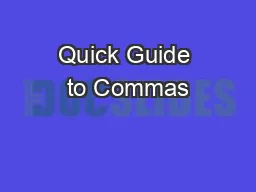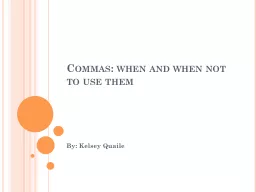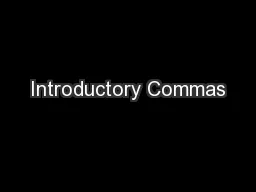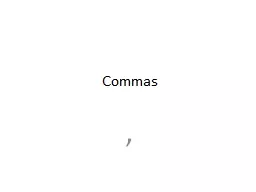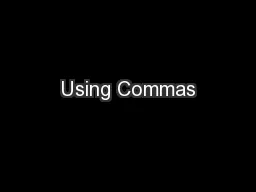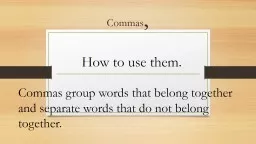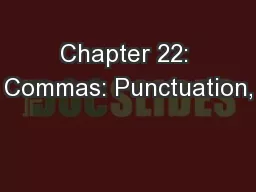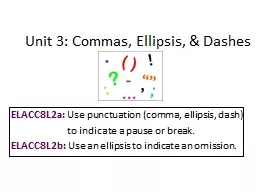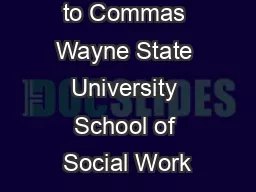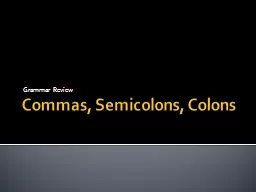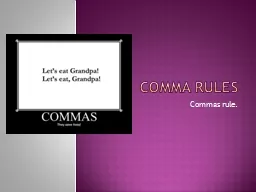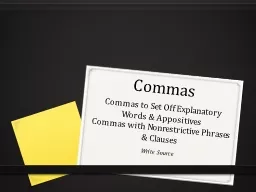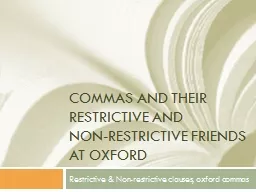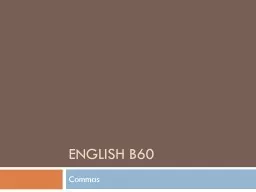PPT-Quick Guide to Commas
Author : min-jolicoeur | Published Date : 2015-11-10
Wayne State University School of Social Work What is a Comma MerriamWebster 2012 defines a comma as A punctuation mark used especially as a mark of separation
Presentation Embed Code
Download Presentation
Download Presentation The PPT/PDF document "Quick Guide to Commas" is the property of its rightful owner. Permission is granted to download and print the materials on this website for personal, non-commercial use only, and to display it on your personal computer provided you do not modify the materials and that you retain all copyright notices contained in the materials. By downloading content from our website, you accept the terms of this agreement.
Quick Guide to Commas: Transcript
Download Rules Of Document
"Quick Guide to Commas"The content belongs to its owner. You may download and print it for personal use, without modification, and keep all copyright notices. By downloading, you agree to these terms.
Related Documents

